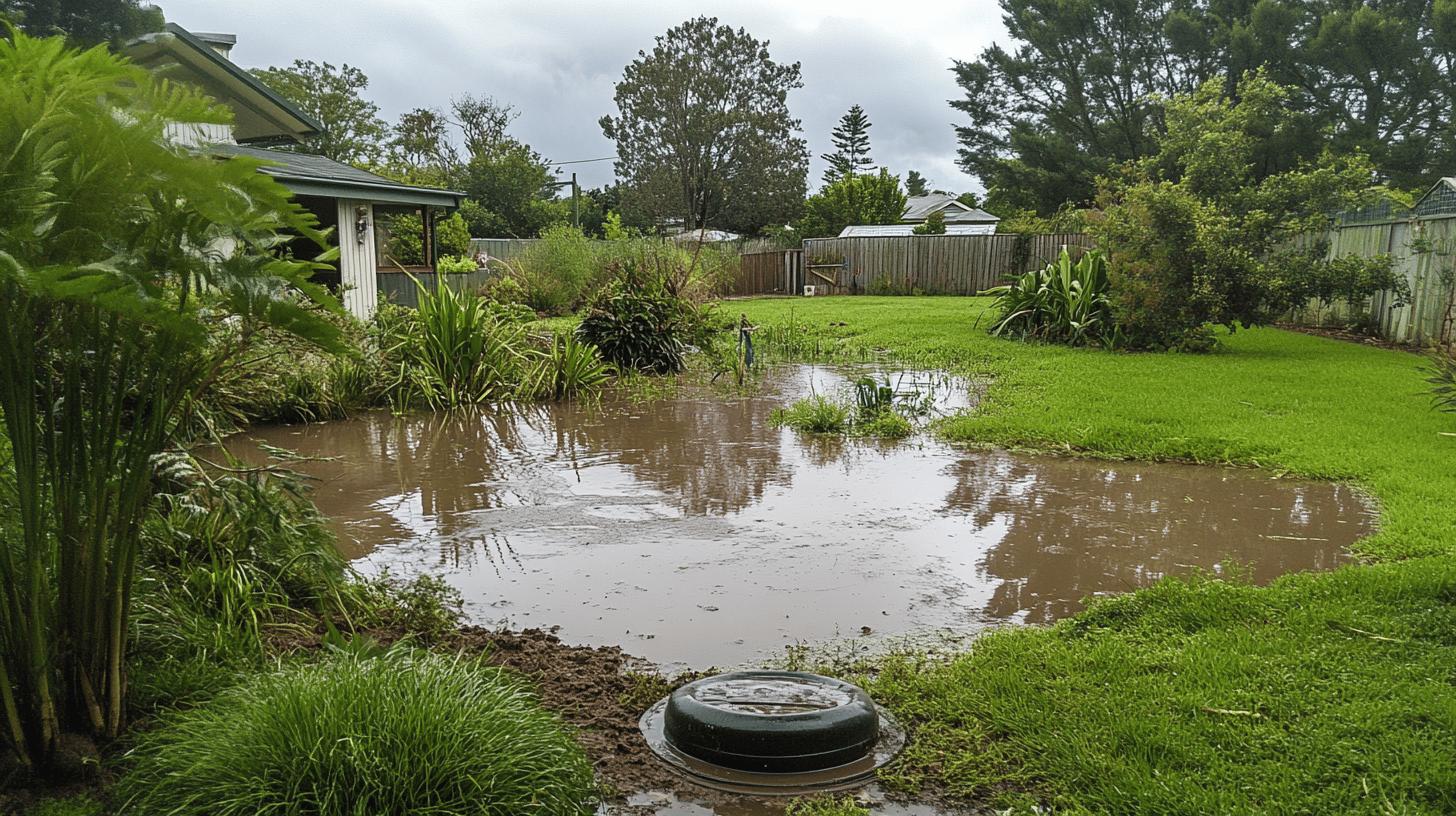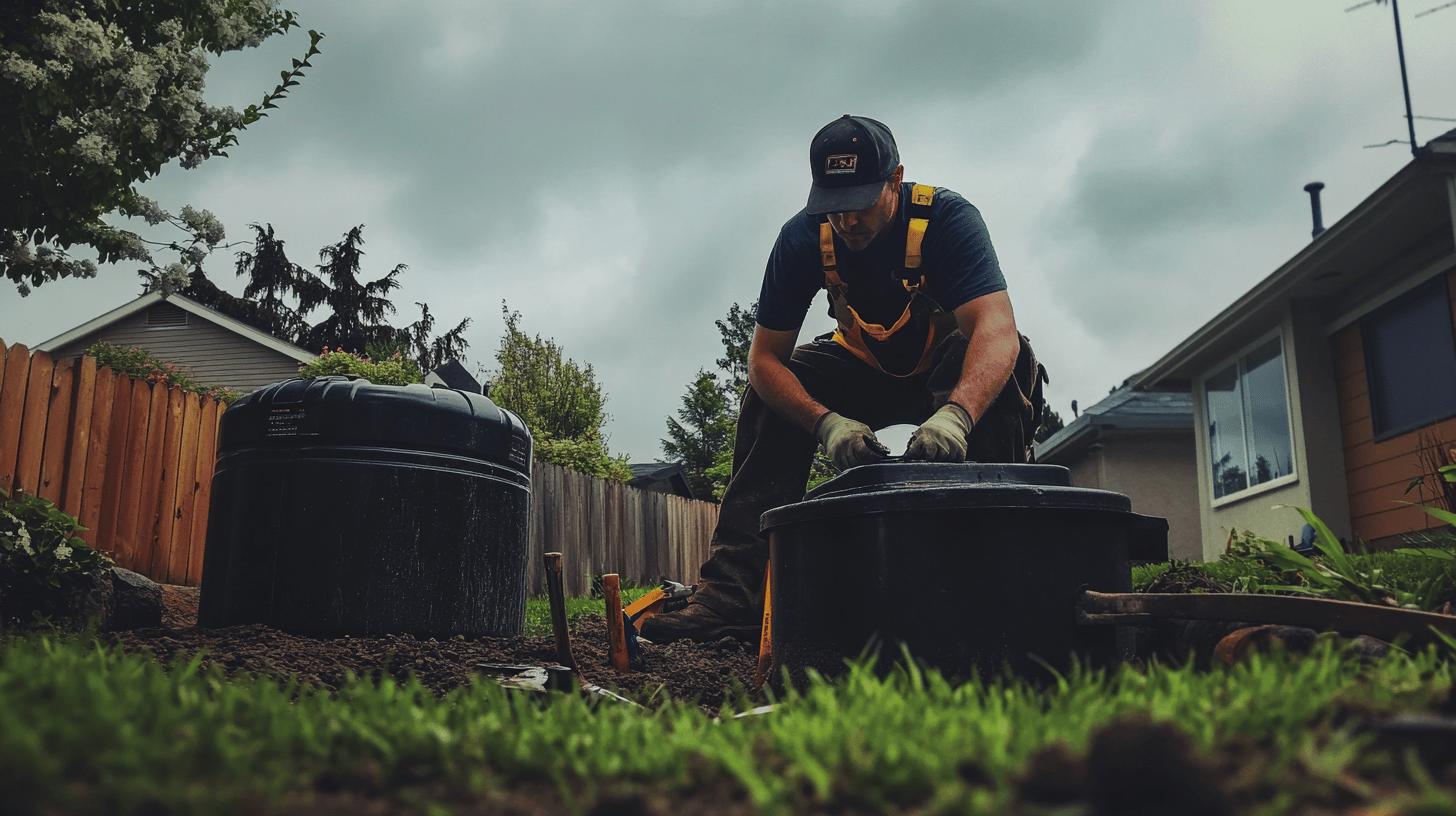TL;DR:
- Signs of a full septic tank: slow drains, gurgling sounds, unpleasant odors, sewage backups, wet patches in the yard.
- Ignoring fullness can lead to plumbing issues, sewage leaks, structural damage, and health risks.
- Regular inspections every 1-3 years; pump every 3-5 years to prevent overfilling.
- Preventive measures: monitor water usage, avoid flushing non-biodegradables, use septic-safe products, redirect surface water.
- Call a professional if there are persistent odors, frequent gurgling, or sewage backups.
- Flushing non-biodegradables disrupts bacteria balance, causing inefficiency. Proper waste management is critical for septic health.
Is your septic tank in need of some TLC? Ignoring signs of a full tank can lead to messy and expensive problems. If you notice slow-draining sinks, gurgling pipes, or a nasty smell around your home, these aren’t just minor annoyances—they’re clear signs that your septic system needs urgent help. Spotting these issues early is crucial to preventing serious damage to your property. Check out the full article to learn the key indicators of a full septic tank and how acting quickly can save you from a messy disaster.
Recognizing the Signs of a Full Septic Tank
Are your sinks, toilets, or showers draining slowly? This could be an early sign that your septic tank is full. When waste can’t flow out properly, water takes longer to drain. You might also hear gurgling noises in the plumbing, especially when using water fixtures. These sounds usually happen because air is pushing through blocked pipes due to debris in an overflowing tank.
Key signs that your septic tank may be full include:
- Slow drains in sinks, toilets, or showers
- Gurgling sounds from pipes
- Unpleasant odors around the house or yard
- Sewage backup in toilets or drains
- Wet patches or unusually green grass in the yard
Spotting these signs early can help you avoid expensive repairs and health risks. If you notice bad smells coming from your septic system, it might mean the tank is almost full. Sewage backups in toilets or drains are serious red flags that need immediate pumping. Also, keep an eye out for wet patches or unusually green grass in your yard, as these could indicate leaks from an overfilled tank. Acting quickly can prevent bigger problems and keep your septic system running smoothly.
The Dangers of Ignoring a Full Septic Tank

Neglecting a full septic tank can lead to serious plumbing issues and sewage leaks, causing damage and hefty repair bills. One immediate consequence is sewage backup, which can flood your home with waste, damaging interiors and posing health risks from bacteria. Overfilled tanks can also clog pipes and slow down drainage, disrupting your daily routine and possibly leading to even more severe problems if not dealt with.
|Potential Issue |Cost Implications |
|———————–|————————————-|
|Sewage Backup |Damage to interiors, health hazards |
|Structural Damage |Expensive repairs or replacements |
|Health Hazards |Increased risk of infections |
Regular maintenance is key to avoiding these problems. If tanks overflow, they can harm the septic system and drain field, leading to expensive repairs or replacements. This kind of damage affects the efficiency of your entire system and can create ongoing issues and financial stress. Keeping up with regular inspections and pumping schedules is essential for making sure your septic system runs smoothly, protecting both your home and your health.
Preventative Measures for Septic Tank Maintenance
To avoid an overfilled septic tank, it’s crucial to have regular inspections and a consistent pumping schedule. So, how often should you check your tank? Aim for an inspection every 1 to 3 years, depending on your household size and water usage. This helps you catch any problems early and keeps your system running smoothly. Pumping is just as important. When should you pump your tank? Typically, every 3 to 5 years is a good rule of thumb to prevent overfilling and avoid expensive repairs.
Here are effective ways to keep your septic system in top shape:
- Monitor water usage to avoid overloading the system
- Avoid flushing non-biodegradable items, like wipes and feminine products
- Use septic-safe cleaning products to maintain bacterial balance
- Redirect surface water away from the drain field
- Schedule professional inspections regularly, especially if signs appear
Knowing when to call in a pro for inspections is super important. If you notice slow drains, bad smells, or gurgling sounds, it’s time to reach out to a professional. They can pinpoint problems accurately and recommend effective fixes to stop small issues from becoming big headaches. Don’t wait for something minor to turn into a major repair. Regular check-ups are key to keeping your septic system healthy and efficient.
When to Call a Professional for Septic Tank Services

Noticing signs that your septic tank might be full? It’s important to call a pro to avoid complications. Why should you trust professionals? They can accurately diagnose septic issues and provide solutions that save you both time and money. They’re equipped to deal with serious problems, like sewage backups or structural damage, ensuring your septic system runs smoothly and minimizing health risks. If left unchecked, a full tank can lead to expensive repairs and health hazards from bacteria.
When is calling a professional essential?
- Persistent sewage odors around your home or yard
- Frequent gurgling sounds in plumbing
- Sewage backup in toilets or drains
Emergency services are ready to help with serious issues like sewage backups, providing quick responses to minimize damage to your home. Acting fast when you notice these signs is key to keeping your home safe and avoiding expensive repairs.
Understanding the Impact of Household Habits on Septic Tank Health
Flushing habits can seriously impact your septic tank’s health. Tossing non-biodegradable items, like wipes or feminine products, into the toilet can quickly fill the tank, leading to overflows and blockages. These items don’t break down easily, messing up the bacteria balance that’s crucial for breaking down waste. When this balance is thrown off, the system works less efficiently, filling up faster and increasing the risk of problems. You might notice bad odors and slow drainage, which are signs that your septic system is struggling.
To keep your septic system healthy, practice smart waste management. Avoid flushing anything non-biodegradable and stick to septic-safe products that won’t harm the helpful bacteria. Watch your water usage, too; too much water at once can overwhelm the system. Space out appliance use, like dishwashers and washing machines, to avoid straining your septic tank. By adopting these habits, you can help prevent overfilling and ensure your septic system runs smoothly. Proper waste and water management are key to keeping your septic system in good shape.
Final Words
Knowing the signs that your septic tank is full can help you avoid expensive repairs and health risks. It’s important to pay attention to indicators like slow drainage, gurgling noises, and bad smells. Catching these issues early can prevent them from getting worse. By keeping up with regular maintenance, you can avoid septic problems and ensure your system runs efficiently.
Hiring professionals is a smart move since they have the expertise to diagnose and fix issues quickly. Good flushing habits and monitoring your water usage can also improve your septic tank’s performance. Staying proactive will help keep your system healthy and your home safe.
FAQ
How do you know if a septic tank is full?
A full septic tank often shows signs like slow drainage in sinks, toilets, or showers. Gurgling noises or unpleasant odors in plumbing systems can also indicate this issue.
What happens when a septic tank is full?
When full, a septic tank can cause sewage backup into toilets or drains, potentially damaging interiors and posing health risks. It might also result in structural damage to the system.
Can I shower if my septic tank is full?
Showering with a full septic tank may worsen the issue, leading to plumbing problems and potential sewage backup due to limited tank capacity.
Will your toilet flush if your septic tank is full?
A full septic tank might prevent toilets from flushing properly, causing slow drainage or water backing up into the bowl.
How much does it cost to empty a septic tank?
The cost to empty a septic tank varies widely based on location and tank size but usually falls between $200 to $500.
How do I know when my septic tank needs pumped?
If you notice slow drains, gurgling pipes, or sewage odors, it’s time to have your septic tank pumped.
How long does it take for a septic tank to be full?
A septic tank can fill in 3 to 5 years, depending on household size and water usage habits.
Home remedies for full septic tank
Home remedies are unlikely to effectively address a full septic tank. Professional pumping is essential for solving the issue.
What does a full septic tank look like?
Signs include sewage backup, wet patches in your yard, or unusually lush green grass, indicating possible leakage.

